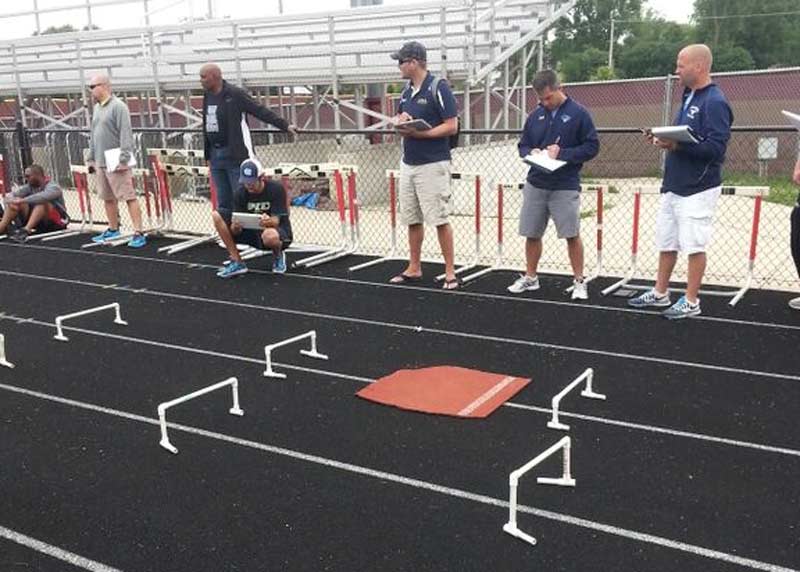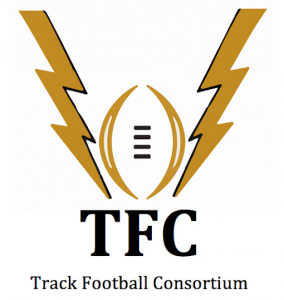
Mini Hurdle Progression
As I reflect on my current season and where we are going and where we have been, I realize that I have progressions and some things and not in others. For example, my running drills change weekly, my agility drills change weekly. But, other aspects of my workouts they aren’t changing. One of the staples of my workouts or running drills are mini hurdle runs or what some people referred to as wickets (I still don’t know what a wicket is). I thought it was something that they used to play cricket. But I should stand corrected because the first definition in the dictionary is a small gate. (I’m sticking with mini hurdles.) I use mini hurdles as a warm-up to correct form. I use them to challenge lateral stability and strength and I also use them to challenge foot departure. If you read my last blog, you read how I use them for overspeed training as well with elevated surfaces. However, my athletes have done this so many times now and seem to have mastered them but yet I continue to go back and do the same thing over and over again and expect even better results. I believe someone much smarter than me (Einstein) said that that is the definition of insanity. So I started to ask how can I continue a progression where mini hurdles are still a useful tool and not something that is completely worthless and doing them for the sake of just doing them. I know I should just step up to the plate and dump the exercise when we get to the certain point but I guess I have some kind of emotional attachment to them.
To be completely honest, it really wasn’t a reflection on the mini hurdles but really reading a paper that was shared with me by Hans Von Liers looking at foot function in sprinting (Biomechanics of Foot Function in Relation to Sport Performance, Grace Smith, 2012). In the paper, the author was reviewing research regarding what made people ran faster. Early in the paper she referenced other work which discussed the maximum velocities surrounding their sprint times. The research found that typical velocities were around 10.5 meters per second and stride lengths ranging from 2.0m to 2.4m and frequencies around 4 to 5 hertz. So, I figured why not push the boundaries of the mini-hurdle runs further than what I had done before. Usually my max distance for my mini hurdle runs was 2.1m. And I had the athletes run through at about 90% of maximum speed. I figured why not bring this out further and challenge the athlete if they can drive for a longer stride without sacrificing frequency. My fear in the past was that in over-striding would allow the heel to hit first, cause deceleration and really turn into more of a bound then a sprint. And for me, bounding does not have as much transfer to sprinting as I like because of the heel striking and long contact times.
So what I decided to do was to take a page from Håken Andersson, who is a great sprint coach from Sweden who also deals with similar problems that I have which is training indoors because of the horrible weather which seems to last forever. I have read about Håken doing an exercise which looks to be something like a speed bound. Based on his concept of speed bounding along with what I saw in the literature kind of spurred me on to this next progression.
What I did is stretch the hurdles out a little further either 2.2m or 2.3m for a distance of 8 hurdles. I then took my laser timers and put them at the beginning and end of the set of hurdles and timed their run through the hurdles. Using the “Feed the Cats” technique of ranking times as they went through, athletes pushed through the hurdles faster every attempt. With the improved times came improved contacts on the ground and a more powerful sprint. We did this for 2 weeks, (forced to do it for two weeks because it is still snowing in April and the baseball and softball coaches are the assistant Athletic Directors, so no field house). When we finally got outside, we had some substantial improvements in our 23 sec runs. When we hit a plateau, I will roll out some mats to force improved stiffness in the lower body on the runs. I don’t know if it would be appropriate to revisit my old stand-by, the arms-overhead runs. It might be too much pressure on the hips. I think arms crossed might be OK at 2.2. Or, I might even take the distance out another.05m. When you start getting that far, every little bit makes a difference.
Then we came back with a similar concept but worked more on frequency. I shortened the hurdle distance to 1.9 and tried to get them through as fast as possible and I put a timer on them as well. I like the shorter distances with speed. It seems that there’s a lot more going on in the front part of the contact on the ground. Again, I stole the concept from the paper, “Sprint Running Performance and Technique changes in Athletes During Periodized Training: An Elite Training Group Study” by Ian Bezodis, et al. in the International Journal of Sports Psychology and Performance. Besides finding that strength training decreased velocity and frequency of four sprinters, he discussed stride length and frequency. He mentions that focusing on frequency “may predominantly result from faster force production due to neural adaptations.” So, while one block worked on overall force production, now we are seeing how fast we can create the force. This variation worked well. So well, in fact, that I started towing people over the mini hurdles at 2.0m. I found that it not only increased their turnover but also forced perfect timing in their sprint. The event is so fast and so much more complex than a normal sprint, they have to be perfect. We weren’t towed at a speed faster than their peak velocity. They were towed at a speed just fast enough to “take some pressure off” as one athlete described it. As you can see from the video, there is no heel strike from the side. From the front, you can see very good hip motion. I think it is different than just plain overspeed because this forces timing. It is an advanced boom.
Another idea I have been toying with is mini hurdles on a curve. We always do our drills and mini hurdles on a straight, but as a sprinter, we spend half of our time making a left hand turn. If we are assessing our practice organization, we should drill on the curve. And, watching many 200m races, it always seemed that frequency changes when runners hit the curve. One of the main goals of mini hurdles runs is to develop timing. How many sprinters have we seen struggle on the curve but do very little to deal with the problem. I like using the hurdles because it promotes a consistent stride frequency. Also, I think it is important to run them in lane-one as well. I think the radius seems tighter and will challenge the frequency of the run more than being out in lane 5 or 6. I varied by distances between 2.0 and 2.2. Athletes who weren’t as good on the curves almost seemed to squat down some. Of course, the cue to get runners up.

Chris Korfist


Thanks for the great article! About how many days a week would you say you do mini hurdle runs? once a week on top speed days, or every sprinting day so 2-3x/wk? I’m pumped for TFC this year!
Thanks for the great article! How many days a week would you say your athletes hit the mini hurdles? Once a week (on fly 10 days), or more like 2-3 on the other sprint days as well? Thanks I look forward to TFC 7!
I usually pair them with the kind of workout we are doing. So on Fly 10’s day, we will go straights. Days we are working the curve, we will run the mini’s on the curve. We will do them twice a week. It also depends on what we need as a team.